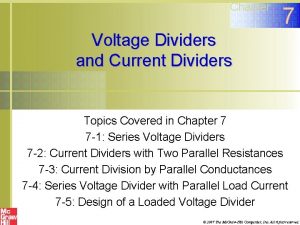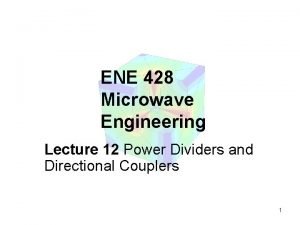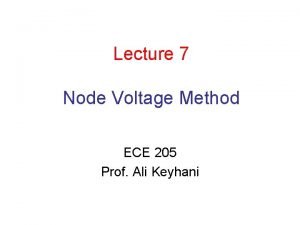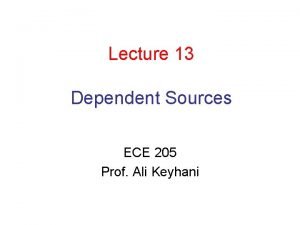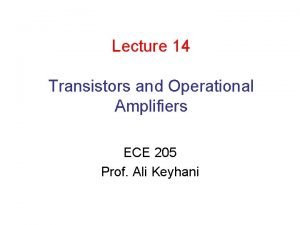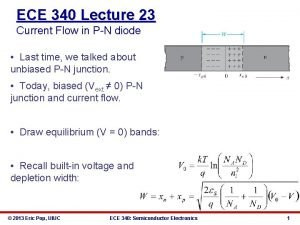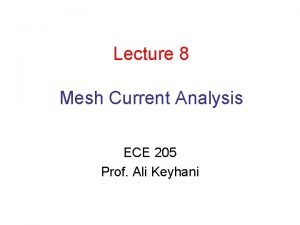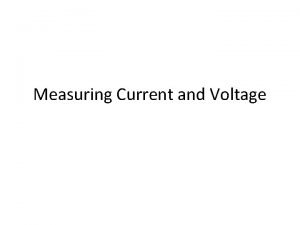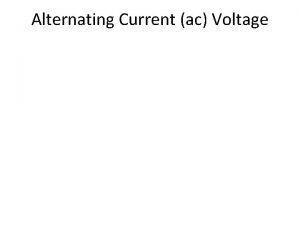Lecture 4 Voltage and Current Dividers ECE 205








- Slides: 8

Lecture 4 Voltage and Current Dividers ECE 205 Prof. Ali Keyhani

Voltage Division • Provides a simple way to find the voltage across an element in a series circuit without solving the circuit equations The elements are in series so the same current passes through each resistor: Using Ohm’s law the voltage across each resistor is found:

Voltage Division • From the equations a pattern is derived for the series connected resistors: – The voltage across each resistor is equal to its resistance divided by the equivalent series resistance of the connection times the voltage across the series circuit.

Example 1 a) Find the voltage across the 560 Ω resistor. b) Assume Ro is not known. Find the value of Ro so that the voltage across the Vo is 6 V

Example 2 A) What is the voltage Vo when D 1 and D 0 are closed? B) What is the voltage value is D 0 is open and D 1 is closed?

Current Division • Provides a simple way to find the current through an element in a parallel circuit without solving the circuit equations The elements are in parallel so the same voltage appears across each conductance: Using Ohm’s law the current through each resistor is found:

Current Division • From the equations a pattern is derived for the resistors connected in parallel: – The source current divides among the parallel resistors in proportion to their conductances divided by the equivalent conductances in parallel connection.

Example 3 • Find the current ix. Solution: The circuit is divided into two paths. Then the current division rule is applied to the equivalent circuit.
